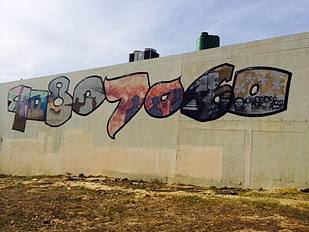Food Blog -Russ & Daughters Cafe

Lillian Wald: America’s Social and Healthcare Reformer
November 29, 2017
Launch Party For New Book “Jewish South Florida”
December 7, 2017Can the old be new again?
Russ & Daughters, a store dating back to 1914 on the historic Houston Street on the Lower East Side, seems to be re-inventing itself for future generations. And taking its tradition and past with it.
For a century, the iconic store has sold candies, chocolates, smoked salmon of all flavors, caviars and herrings. It began with Joel Russ, an Eastern European immigrant, who sold mushrooms until he could purchase a pushcart and add items such as pickled herring. In 1914, he did what all vendors dreamed—opened in a storefront.
For a century, Russ and his daughters and their descendants have served smoked-fish craving customers. The neighborhood has changed from a large Jewish presence in the 1920s and 30s to rapidly expanding Chinese and Latino communities in the mid-century to the hard-worn, dangerous days of the 1970s and 1980s to the current and rather remarkable gentrification. So too have the customers changed. Largely gone are the elderly customers with wire shopping carts inspecting carefully each sturgeon slice. In their place are largely a more affluent group of younger, less ethnic customers. But the business continues with a new generation.
In the past year, the nearby Russ & Daughters Café opened. The walls are adorned with pictures of the store throughout the centuries. The original daughters of Joel Russ—“Russ’s Daughters”—are immortalized in the menu. Each daughter’s name doubles as the name of a platter. The Hattie for $80 is smoked whitefish, baked salmon, nova smoked salmon and sable. The Ida for $70 is smoked salmon, gaspe nova smoked salmon and gravlax. And the Anne for $90 is western nova smoked salmon, private stock sturgeon and wild Alaskan salmon roe.
Always a staple of the venerable store, herring is served with different flavors. The “pickled herring trio” boasts 3 different flavors of herring on pumpernickel bread. Combining herring with vodka, the “schmaltz and a shot” offers schmaltz herring, boiled potato, raw onion and a shot of vodka. The classic soups are also there—matzo ball, mushroom barley, borscht served chilled with beets, sour cream and dill.
Classic desserts are served with a modern twist. The noodle kugel usually served as a dry dish with farmer cheese, raisins and egg noodles is presented as a soufflé. It’s like a custard version. The babka French toast uses chocolate babka with sour cream and fresh berries.
But the star of the menu is the drinks. The sodas are made the ole’ fashioned way with seltzer and house made syrups. My favorite is the tangy flavored ginger soda with lavender and lime and the coffee soda made with the café’s signature roast. Other flavors include lemon-lime, cream, Concord grape, blueberry and the unexpected cucumber featuring jasmine, anise seed, dill seed and lime.
Harkening back to the 18th century way of preserving fruit with vinegars, the café also offers “shrubs.” The menu proudly proclaims that shrubs are “the beverage equivalent to the process of pickling.” A historic footnote is added to the menu: “Shrubs were invented as a way to preserve fruit with vinegar and have been used to flavor drinks in America since the 18th century.” The drink is an acquired taste-it has a subtly sour taste.
Of course, egg creams—the iconic soda fountain favorite—are served up at the cafes retro bar. Unexpected flavors include malt and buxar.
The vintage photos hang on the walls and the signage, lettering and décor harken back to its earlier years. The iconic store is marching into the 21st century with this new café. And more changes are afoot. A smaller and kosher version will soon open at the Jewish Museum in the Upper East Side. As they would say before drinking in Joel Russ’s homeland of Russia – Zazdarovje!




